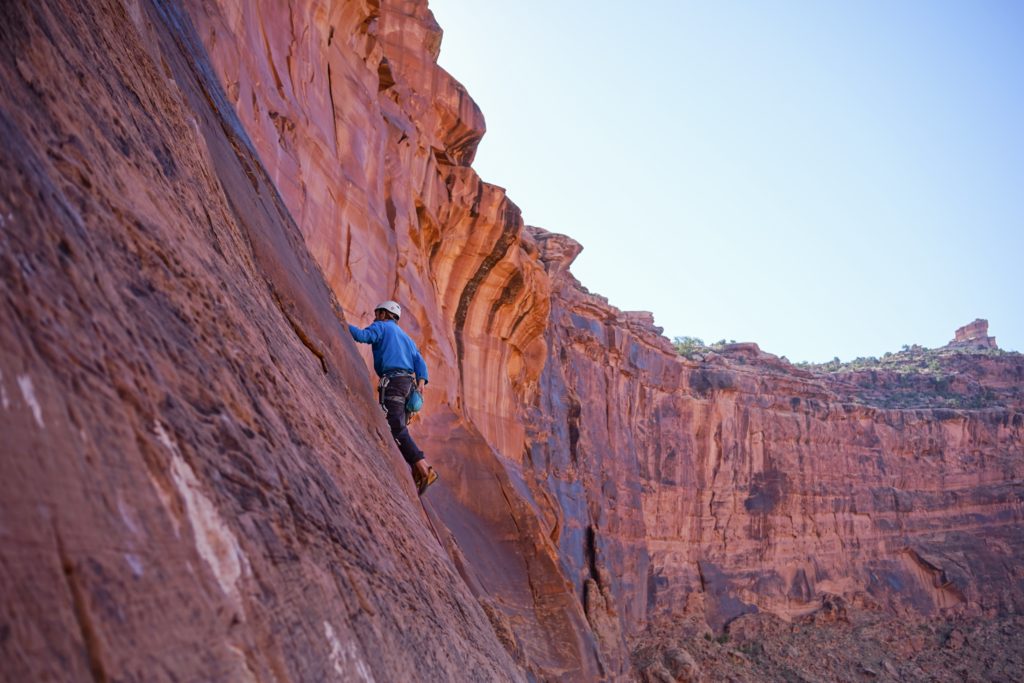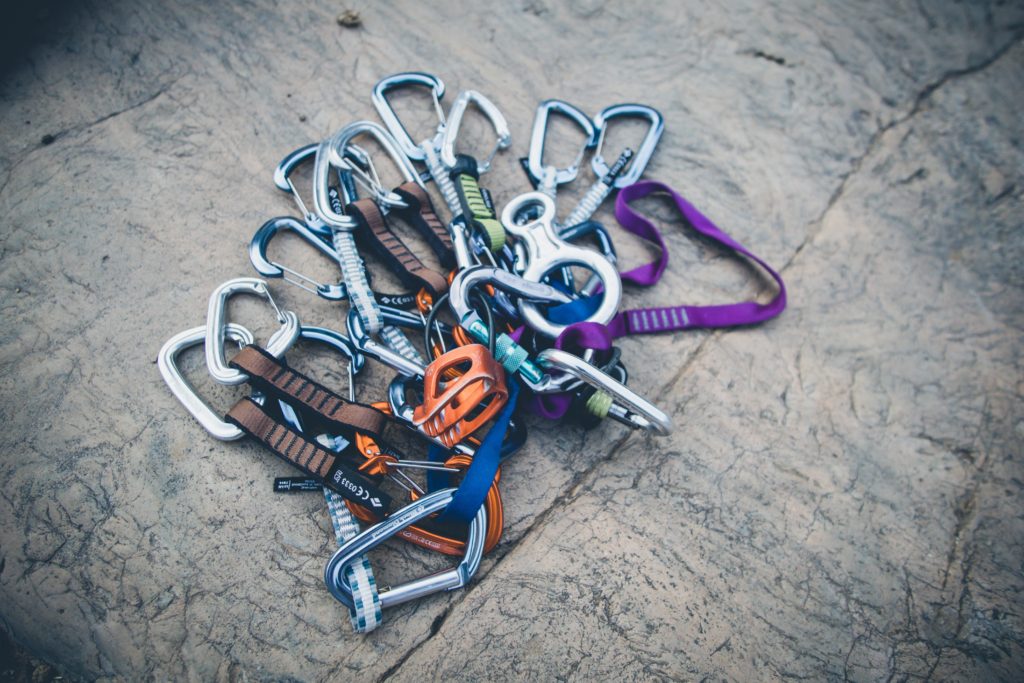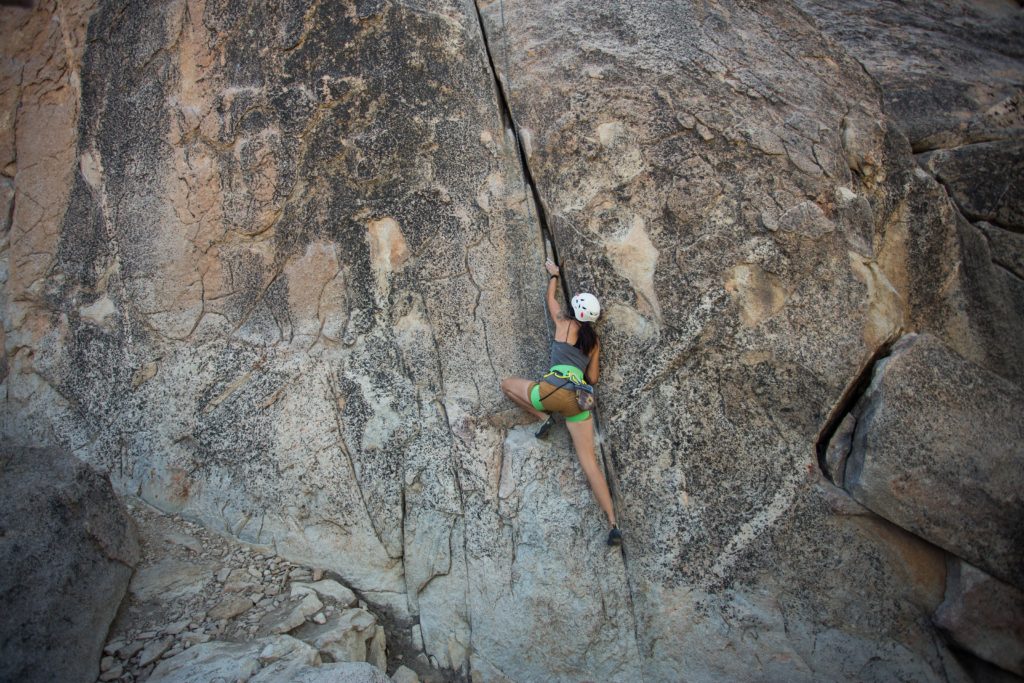The warmer weather and longer days of springtime offer the perfect opportunity to head outdoors. One way to enjoy all of that extra sunshine is to implement a rock climbing program with a focus on safety, education, and fun. Of course, you can teach rock climbing indoors, as well – but we’ll take any excuse to get kids (and ourselves) outside!
Here are some tips to help you launch a successful climbing program. If you want to dig in further (which we highly encourage), visit our Rock Climbing Path on the TYO website.
BASICS
The discipline of climbing covers a lot of ground including indoor climbing, bouldering, rock climbing, and ice climbing. For the sake of discussion here, we’re going to focus on rock climbing, specifically what’s called “top-roping,” where a person climbs a single pitch (one rope-length) route. During this activity, the climber is tied in to a harness via a rope (anchored at the top of the climb) that is being managed by a belayer on the ground who creates tension in the rope to “catch” the climber if they should slip and fall.
Climbing is an inherently technical sport; it’s imperative that you have experience climbing in the style and terrain you’re considering, that you know how to use and maintain the gear used in the sport, and that you can appropriately teach all necessary skills and safety protocols. Because of this, we recommend you obtain a Single Pitch Instructor certification with the American Mountain Guides Association or that you hire an established and certified guide to lead this program for your group.
Here’s an overview of other skills you’ll need as a leader in order to launch a climbing program:
- Medical Training: Wilderness First Aid and CPR certifications or beyond
- Group Facilitation Skills: Knowledge of group dynamics, risk management, and conflict resolution
- Teaching Skills: Ability to develop and/or use existing lesson plans and effectively instruct on the given topic
- Knowledge of Local Environment: Understand local rules and regulations (including permitting requirements), along safety hazards at your program location; research climbing routes
- Protocol for Etiquette: Know both general Leave No Trace principles and climbing-specific etiquette
PLANNING YOUR PROGRAM
The great news is that you don’t have to reinvent the wheel – we have a suite of resources ready to help you make the leap from thinking about climbing to actually getting on the wall. Here area a few things to keep in mind:
- Site Selection: When planning any outing, you’ll want to carefully consider site selection. Is there shade? Water? Bathrooms? Think specifically about the terrain and any accessibility issues. Do you have space to park? Do you have cell service? Also consider the difficulty of the rock climbing routes and the skill level of your group. In that same vein, know what the approach route is for each climb – some vary from on-trail hikes to very involved scrambles; local guidebooks and guides will help in this regard.
- Teaching Topics: Consider what you want participants to get out of the day’s activities. Safety instruction is paramount, along with an introduction and overview to the specific gear and protocols used in climbing. You might spend time talking about knots, rope management, communication, hazards, local geology, and so on.
- Scheduling: How do you envision the outing’s flow? Having a clear plan for the day’s activities will help you feel organized and stay on track to ensure everything is covered. We created a Rock Climbing Day Planner that outlines a full-day climbing activity, including a sample lesson plan. Use this in partnership with our Rock Climbing Day at a Glance template (you can also find a sample Day at a Glance here) to help you transfer the overall plan to a streamlined schedule.
DOCUMENTS
Organization is key to launching a successful program and hosting hassle-free outings. While everyone develops their own systems catered to their specific needs, program, and/or leadership style, there are a few basics (customizable, of course) that will help you keep everything in order.
- Local Operations Plan: This is a summary of relevant resources and information that will be useful in case of an emergency; some permitting agencies and locations will require this, but it’s good to have on hand regardless. Here’s our Local Operations Plan template.
- Trip Log: This is a simple way to organize basic information about trip logistics and participants; it also features a post-trip questionnaire that you can use for assessment purposes. Here’s our Trip Log template.
- Gear Checklist: Keeping a gear checklist on hand will help ensure you don’t forget any necessary supplies for your outing. Here’s our Rock Climbing Gear checklist.
OTHER RESOURCES
Our Rock Climbing Path offers a wealth of resources in addition to those listed above that will help you design and launch a successful climbing program. Use these for inspiration as you get to work; full descriptions can be found at the links below or via the Path.
- Sample Rock Climbing Instructions
- Sample Rock Climbing Lesson Plan
- Sample Rock Climbing Curriculum Chart & Info
- E-learning Online Module Rock Climbing
- Sample Waiver and Medical Form
In addition, you might consider visiting the following Paths on the TYO website:
Happy climbing!



